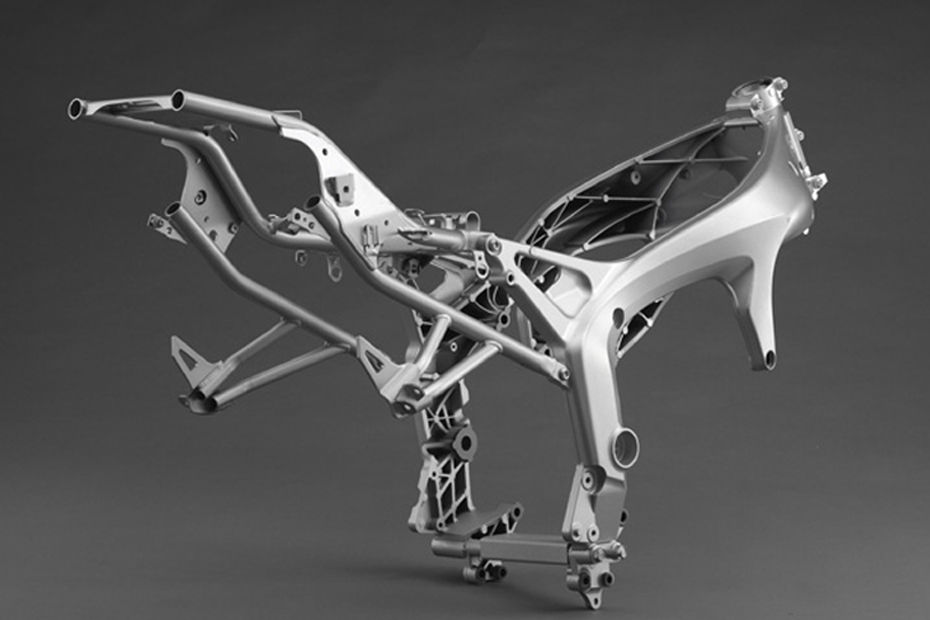Different Types Of Motorcycle Chassis: Explained
Published On Jul 28, 2019 04:19 PM By Gaurav Sadanand for KTM RC 125 (2019-2021)
- 18218 Views
- Write a comment
We take a look at the different types of motorcycle frames based on budget and performance as well as their advantages and disadvantages

Much like a human spine and the supporting skeleton, a motorcycle chassis holds everything together - from the engine, suspension, wheels, fuel tank, handlebars, seat, airbox etc. Every bike's handling depends on various factors such as suspension tuning, weight, tyres and most importantly the strength and rigidity of the frame. There are various types of motorcycle frames which are based on the financial envelope and required performance from the bike. Materials aside, we will be taking a brief look at the types of motorcycle chassis, their advantages and disadvantages.
Backbone frame:

In layman's terms, a backbone frame acts as the spine of the bike and holds crucial components together. The engine is bolted onto the frame which connects to the steering head and pivot point for the rear suspension. Here, the engine usually hangs off the chassis and isn’t cradled or considered as a stressed member. It’s the most affordable type of chassis as its construction is fairly simple. On the flip side, a backbone frame offers less torsional rigidity and strength, and hence, used on low-cost motorcycles running smaller engines. The Hero Honda CD100 is one such example.
Single cradle frame:

A single cradle frame, also known as single downtube or diamond frame, is most commonly used on budget-friendly motorcycles. It mimics the look of a bicycle chassis. Here, the frame acts as a bed for the engine with two tubes connecting the steering head or yoke. One runs over the engine while the other (bottom tube) passes from below. In some cases, motorcycles which employ a downtube frame use the engine as a stressed member. While the assembly is light and cheap to manufacture, it isn’t the strongest of frame types. For instance, it isn’t well balanced and becomes wobbly and unstable under heavy braking or cornering. Bikes like the TVS Star City, Honda CB Shine and the Royal Enfield Classic 350 are some motorcycles that use single cradle frame.
Double cradle frame:

A double-cradle frame uses two tubes running beneath the engine in order to support it instead of one steel tube on a single cradle frame. While the frame is cost-effective, it provides a significant advantage over a downtube chassis in terms of strength and rigidity. The construction handles heavy forces generated during hard braking and high lean angles fairly well. That said, double-cradle frames aren’t the best performance-oriented chassis. They are mostly seen on bikes like the Bajaj Pulsar 220F and the Royal Enfield Interceptor 650.
Perimeter & Trellis frames:

A perimeter frame or a twin-spar frame has two box section tubes that are fused to the yoke at one end and the swingarm pivot at the other in the shortest distance possible. The engine, on the other hand, is suspended off it. The end result is a performance-driven chassis that is more stable and rigid.

The idea of the Trellis frame is quite similar to that of a perimeter frame. However, in place of aluminium or steel beams, a trellis frame uses an assortment of short sized steel or aluminium tubes welded together in a triangulated form. That framework has its benefits as its lighter, rigid and offers better lateral flex while pushing the bike hard through corners. It’s also relatively simpler to manufacture. Examples of a perimeter frame can be seen on bikes ranging from the Honda CBR1000RR to the Bajaj Dominar 400 while a trellis frame is most commonly seen on KTMs.
